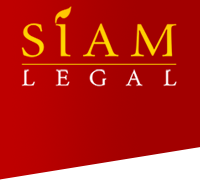U.S. Firm Applying for a Patent in Thailand

Patent filing in Thailand
U.S. firms are eligible to apply for patent protection in Thailand, although if the invention was made in the U.S. you must file an initial patent application there first. If the invention was made in the U.S., you cannot file in Thailand until you receive a foreign filing license or 6 months after filing whichever comes first. In any case, if you are you should make sure you do not sell, use publicly, or publish your invention before you file for a patent.
If you have filed a patent application in the U.S.
If you need to file your patent application in the U.S. first, you can either file provisional application, a non-provisional application or an application through the Patent Cooperation Treaty (PCT) process in the U.S. If you know you want to file in Thailand filing a provisional application will just make the process longer because you will have to file a non-provisional application in the U.S. before you can file in Thailand. (See Intellectual Property in Thailand.)
If you know you will be filing in both Thailand and other countries that are members of the PCT, filing a PCT application is probably your best choice. You can designate the countries where you want patent protection during the PCT process. Once the patent reaches the “National Stage” in Thailand you will want local representation with the Thai patent office.
But, if you only want patent protection in the U.S. and Thailand, you may be granted your Thai patent faster and save in government fees if you file a regular non-provisional application in the U.S. and claim the priority date of that application when you file in Thailand. If you decide to file a patent application in Thailand you will also need a representative registered with the Thai patent office.
The process for filing a patent application in Thailand is similar to that in the U.S. You must the following information:
- Name and address of the applicant, and place of incorporation.
- Name, address and citizenship of the inventor(s).
- Invention Title, Abstract of the Invention.
- Invention specification (description).
- Claims.
- Set of formal drawings.
- Thai translation of the specification.
- The inventor’s declaration which does not need to be notarized.
- Certified priority document (your U.S. application), including priority number and country of origin, should be submitted within 90 days.
- Deed of Assignment if applicant different than inventor.
- Power of Attorney must be notarized by notary public and filed within 90 days.
If you have not filed a patent application in the U.S.
If you are not required to file a patent application in the U.S., you may be able to file your patent application in Thailand as either a PCT application or a regular Thai application. If you would like to file a PCT application in Thailand, your company must have an office in Thailand. As in the U.S., filing a PCT application is your best choice if you want to get patents in other countries. The PCT process is the same as in the U.S. The requirements for filing a regular patent application are the same as listed above, although you will not need to file a certified priority document.
Category: Business in Thailand, Company Law, Company Registration, Thailand BOI
About the Author (Author Profile)
Siam Legal is an international law firm with experienced lawyers, attorneys, and solicitors both in Thailand law and international law. This Thailand law firm offers comprehensive legal services in Thailand to both local and foreign clients for Litigation such as civil & criminal cases, labor disputes, commercial cases, divorce, adoption, extradition, fraud, and drug cases. Other legal expertise of the law firm varied in cases involving corporate law such as company registration & Thailand BOI, family law, property law, and private investigation.











